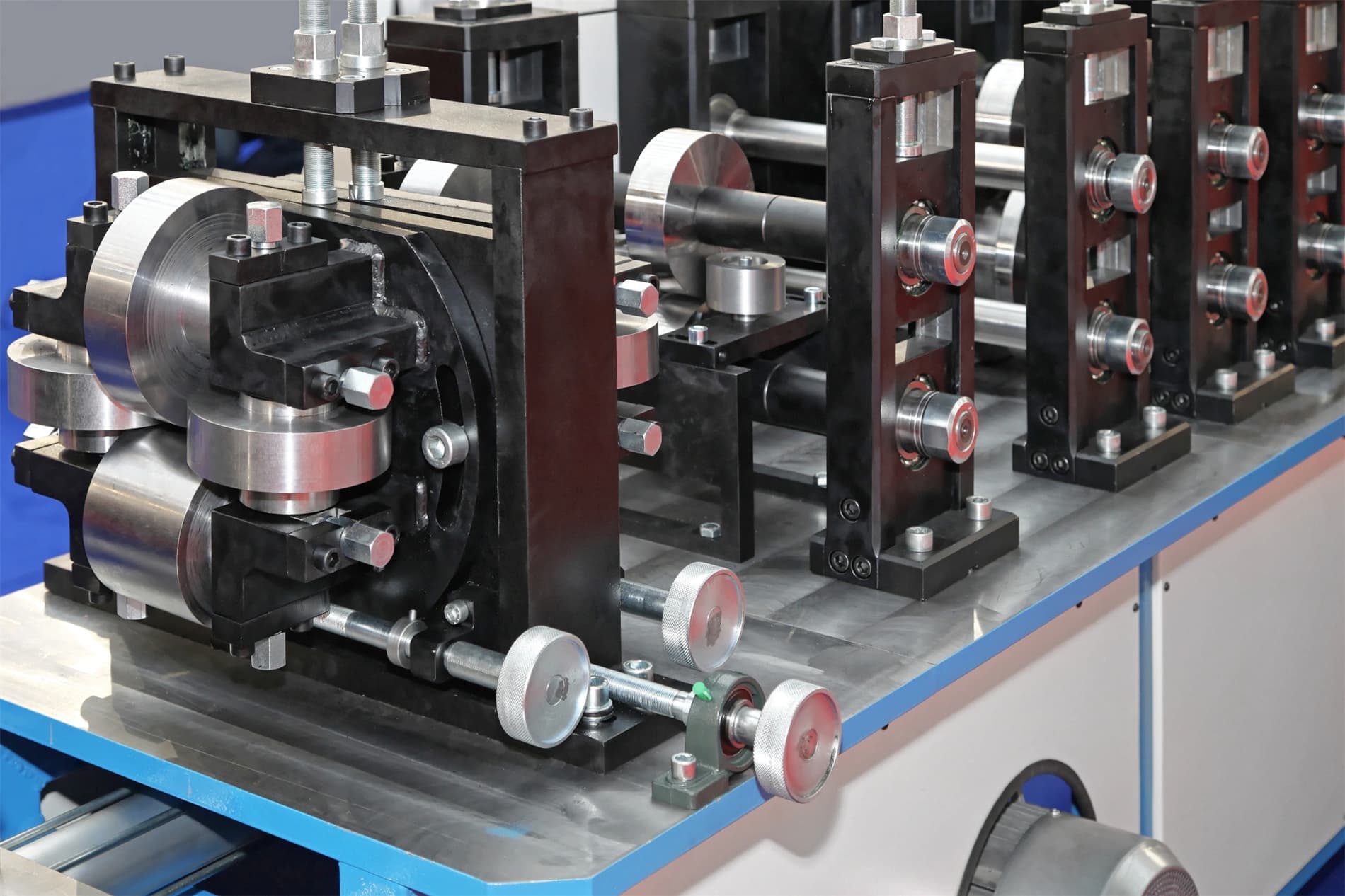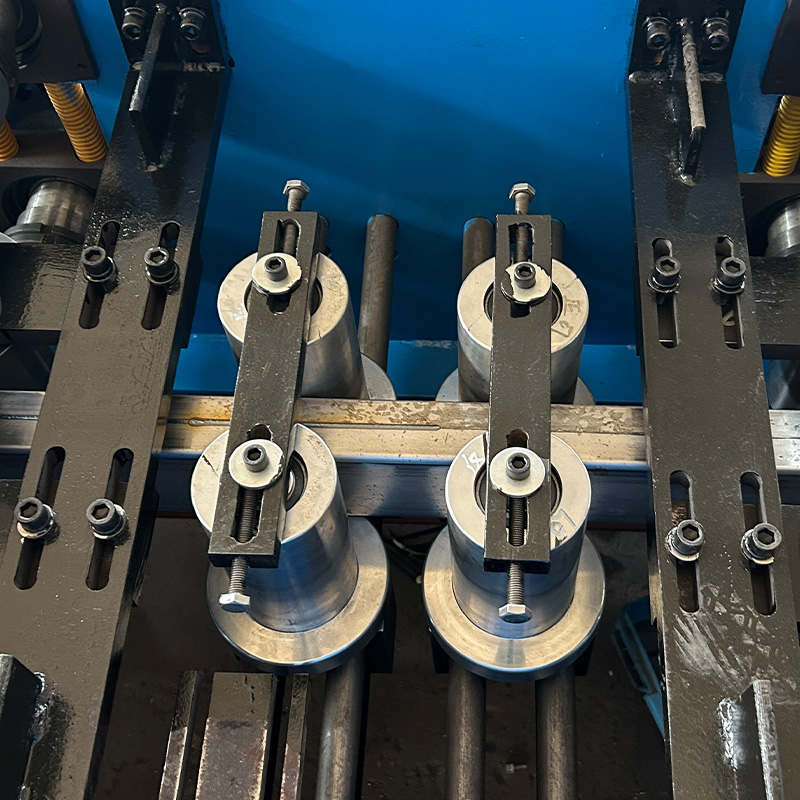Imagine a warehouse – a vast, cavernous space humming with activity. Forklifts dance between towering structures, their metallic arms retrieving and depositing pallets laden with goods. These silent giants rely on a crucial, yet often unseen, component: the warehouse shelf upright rack. And the unsung hero responsible for their creation? The warehouse shelf upright rack making machine.
Function of Warehouse Shelf Upright Rack Making Machines
At its core, a warehouse shelf upright rack making machine is a marvel of metal manipulation. It transforms steel coils into the sturdy vertical supports that form the backbone of warehouse storage systems. But this seemingly simple function belies a complex process.
Here’s a breakdown of the key steps involved:
- Uncoiling: The machine begins by unwinding a giant steel coil, much like a giant roll of paper towels.
- Flattening: Any imperfections or bends in the steel are ironed out using a series of rollers, ensuring a smooth and precise starting point.
- Roll Forming: The star of the show! The steel sheet is fed through a series of precisely designed rollers that progressively bend and shape it into the desired upright profile. Imagine a long, intricate cookie cutter continuously molding the metal.
- Punching and Cutting: Holes for beams, shelf supports, and safety features are punched or cut into the formed upright using strategically placed dies. Think of a high-tech metal confetti maker, but instead of colorful paper, it creates precise perforations.
- Stacking and Cutting: Depending on the machine’s design, the formed and punched uprights might be stacked and precisely cut to length, or cut to size on the fly during the forming process.
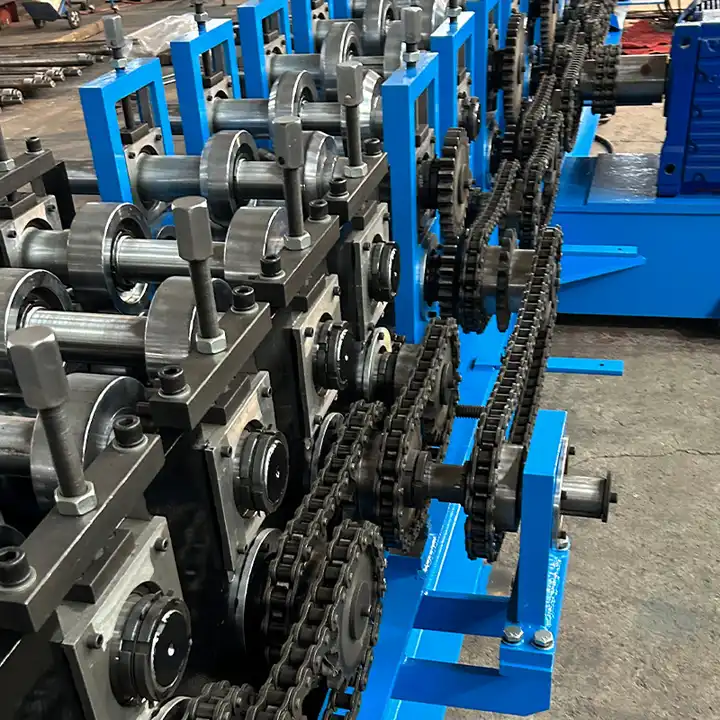
Types of Warehouse Shelf Upright Rack Making Machines
The world of warehouse shelf upright rack making machines isn’t a one-size-fits-all affair. Here’s a glimpse into the diverse options available:
- Automated vs. Semi-Automated: Fully automated machines are self-sufficient workhorses, handling the entire process from uncoiling to stacking. Semi-automated machines, on the other hand, require some human intervention, such as loading the steel coil or manually removing the finished uprights.
- Single vs. Multi-Station: Single-station machines focus on one specific upright profile at a time. Multi-station machines boast the ability to create multiple profiles within the same system, offering greater production flexibility.
- Speed and Capacity: Production speed and capacity vary greatly depending on the machine’s size and capabilities. High-volume operations might require a machine that churns out uprights at a rapid pace, while smaller businesses might prioritize a more versatile, slower option.
Applications of Warehouse Shelf Upright Rack Making Machines
The applications of warehouse shelf upright rack making machines extend far beyond the traditional warehouse. Here are a few examples:
- Industrial Storage Facilities: From automotive parts to building materials, these machines cater to the diverse storage needs of industrial facilities.
- Retail Display Systems: The same principles used for warehouse uprights can be applied to create display shelves for retail stores.
- Data Centers: With the ever-growing demand for data storage, these machines help build the sturdy racks that house server equipment.
-
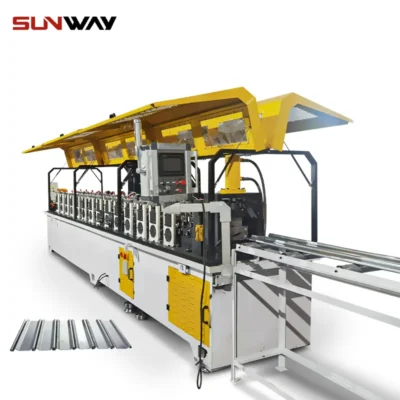 Rolling Shutter Slat Roll Forming Machine
Rolling Shutter Slat Roll Forming Machine -
 Highway Guardrail End Terminal Forming Machine
Highway Guardrail End Terminal Forming Machine -
 Highway U/C Post Roll Forming Machine
Highway U/C Post Roll Forming Machine -
 2 Waves Highway Guardrail Roll Forming Machine
2 Waves Highway Guardrail Roll Forming Machine -
 3 Waves Highway Guardrail Roll Forming Machine
3 Waves Highway Guardrail Roll Forming Machine -
 Electrical Cabinet Frame Roll Forming Machine
Electrical Cabinet Frame Roll Forming Machine -
 Din Rail Roll Forming Machine
Din Rail Roll Forming Machine -
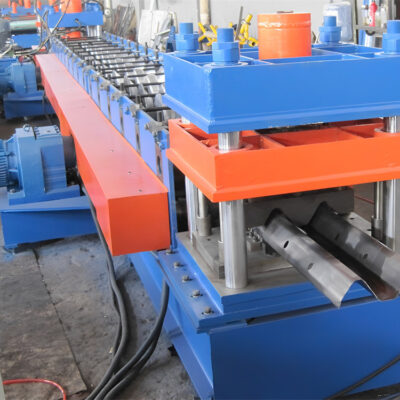 Two waves highway guardrail machine
Two waves highway guardrail machine -
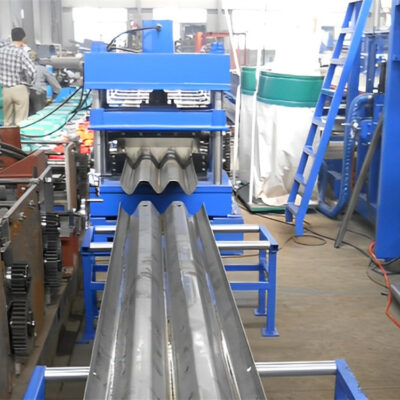 Three waves highway guardrail machine
Three waves highway guardrail machine
Advantages and Disadvantages of Warehouse Shelf Upright Rack Making Machines
Advantages:
- Increased Efficiency: Compared to manual fabrication, these machines significantly boost production speed and accuracy.
- Reduced Labor Costs: Automation translates to a smaller workforce needed to operate the machine, potentially lowering labor costs.
- Consistent Quality: The machine’s precise control ensures consistent quality in the produced uprights, leading to a more reliable and secure storage system.
- Customization Potential: Modern machines offer a degree of customization, allowing manufacturers to create uprights with specific sizes and features.
Disadvantages:
- High Initial Investment: The cost of acquiring a warehouse shelf upright rack making machine can be substantial, especially for high-end, automated models.
- Maintenance Needs: Like any complex machinery, these machines require regular maintenance to ensure optimal performance.
- Space Requirements: These machines can have a significant footprint, requiring dedicated space within the manufacturing facility.
- Limited Flexibility: While some machines offer customization, they might not be as adaptable to highly specialized upright designs compared to manual fabrication methods.
Supplier and Pricing Considerations
The price of a warehouse shelf upright rack making machine can vary depending on several factors, including:
- Level of Automation: Automated machines come at a premium compared to semi-automated models.
- Production Capacity and Speed: Machines capable of higher production volumes tend to be more expensive.
- Customization Features: Machines offering a wider range of profile options will likely have a higher price tag.
Choosing the right warehouse shelf upright rack making machine hinges on finding a supplier that aligns with your specific needs and budget. Here’s a peek into some of the key players in the market, along with a ballpark range of their offerings (Note: Prices are subject to change and may vary depending on specific configurations):
- Brother Union Machinery (China): Renowned for their expertise in roll forming equipment, Brother Union offers machines catering to various production scales. Their machines are known for their user-friendly controls and focus on long-term durability. Expect to see prices starting around $30,000 USD for semi-automated models, with high-end automated lines reaching upwards of $100,000 USD.
- Lotos Forming (China): Specializing in storage rack roll forming machinery, Lotos Forming emphasizes high-precision uprights and the ability to handle various steel types, including galvanized and stainless steel. Their machines cater to mid-range production volumes and typically fall within the $40,000 USD – $70,000 USD price range.
- JSR Roll Forming Machine (China): JSR focuses on robust and reliable machines built to withstand the demands of high-volume production. Their machines prioritize consistent quality and are known for their solid steel underframe construction. Prices for JSR machines typically range from $50,000 USD – $90,000 USD.
- Murata Machinery Ltd. (Japan): A globally recognized leader in metal forming machinery, Murata offers premium, high-performance machines known for their innovative technology and exceptional production speeds. While their machines come at a premium price point, starting around $120,000 USD and potentially exceeding $200,000 USD, they cater to large-scale operations demanding top-of-the-line performance and efficiency.
Remember, these are just a few examples, and the market boasts a wide range of suppliers. It’s crucial to conduct thorough research and compare specifications, features, and after-sales support before making a final decision.
Beyond the Numbers: Considering the Intangibles
While price and production capacity are significant factors, there are other considerations that go beyond the cold, hard numbers. Here are some additional aspects to ponder:
- Brand Reputation: A company with a well-established reputation for quality and reliability might be worth a slight premium compared to a lesser-known brand. Research online reviews, industry publications, and user testimonials to gauge a supplier’s standing.
- Customization Options: Does the machine offer the flexibility to create uprights in the specific sizes and configurations you require? If customization is crucial, prioritize suppliers known for their adaptability.
- After-Sales Support: A reliable after-sales support system is vital. Ensure the supplier offers readily available technical assistance, spare parts, and maintenance services to keep your machine running smoothly.
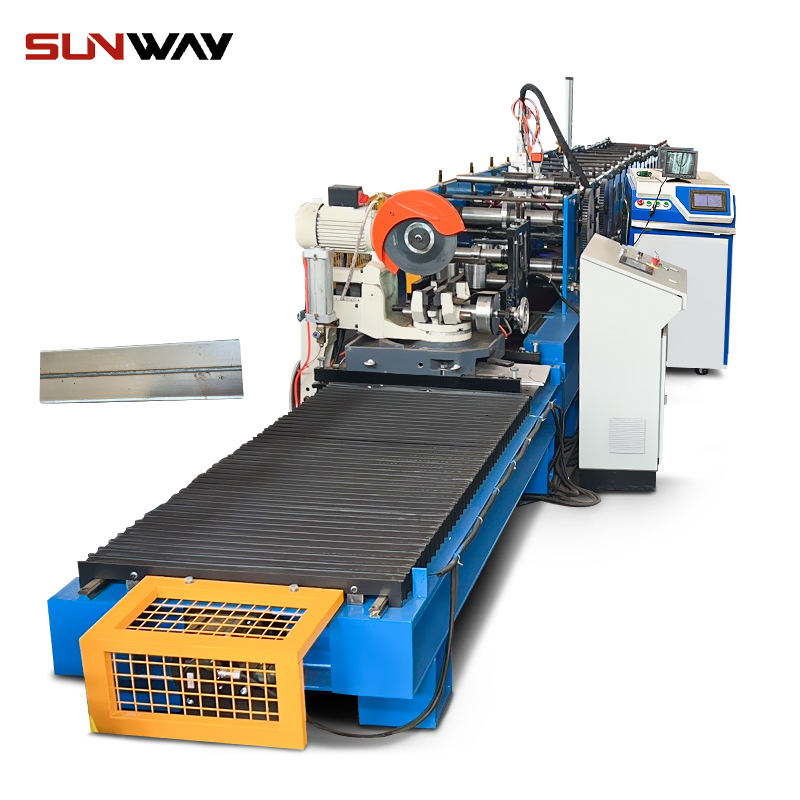
FAQ
Q: What is the typical lifespan of a warehouse shelf upright rack making machine?
A: With proper maintenance, a well-built warehouse shelf upright rack making machine can last for 15-20 years or even longer.
Q: Can I produce different upright sizes with the same machine?
A: It depends on the machine’s capabilities. Some machines offer the flexibility to create a range of upright sizes by adjusting the forming rolls. Others might require dedicated tooling for each specific size.
Q: How much space does a warehouse shelf upright rack making machine require?
A: The footprint can vary significantly depending on the machine’s size and level of automation. Be sure to factor in the space needed for material handling and finished product storage when considering your layout.
Q: Are there any safety considerations when operating a warehouse shelf upright rack making machine?
A: Absolutely. These machines involve heavy machinery and moving parts. Proper training for operators and adherence to safety protocols are paramount to prevent accidents.

